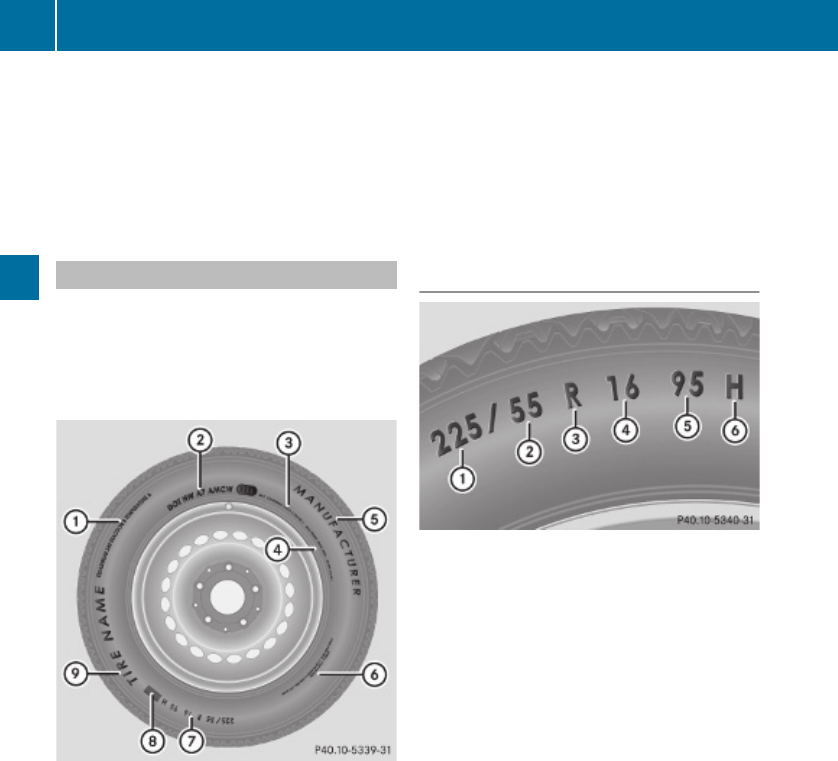
Thoroughly clean the mounting face of wheels
and brake disks, i.e. the inner side of the
wheels/tires, during each rotation. Check for
and ensure proper tire inflation pressure.
For information on wheel change, see “Flat
tire” (Y page 317).
Tire labeling
Besides tire name (sales designation) and
manufacturer name, a number of markings
can be found on a tire.
Following are some explanations for the
markings on your vehicle’s tires:
:
Uniform Tire Quality Grading Standards
(Y page 244)
;
DOT, Tire Identification Number
(Y page 249)
=
Maximum tire load (Y page 242)
?
Maximum tire inflation pressure
(Y page 237)
A
Manufacturer
B
Tire ply material (Y page 250)
C
Tire size designation, load and speed
rating (Y page 246)
D
Load identification (Y page 249)
E
Tire name
i
For illustration purposes only. Actual data
on tires are specific to each vehicle and
may vary from data shown in above
illustration.
For more information, see “Rims and tires”
(Y page 344).
Tire size designation, load and speed
rating
:
Tire width
;
Aspect ratio in %
=
Radial tire code
?
Rim diameter
A
Load index
B
Speed symbol
i
For illustration purposes only. Actual data
on tires are specific to each vehicle and
may vary from data shown in above
illustration.
General: Depending on the design standards
used, the tire size molded into the sidewall
may have no letter or a letter preceding the
tire size designation.
No letter preceding the size designation (as
illustrated above): Passenger car tire based
on European design standards.
Letter “P” preceding the size designation:
Passenger car tire based on U.S. design
standards.
Letter “LT” preceding the size designation:
Light Truck tire based on U.S. design
standards.
246
Tires and wheels
Operation
204_AKB; 5; 23, en-US
d2ureepe, Version: 2.11.8.1
2009-07-16T17:54:06+02:00 - Seite 246


















